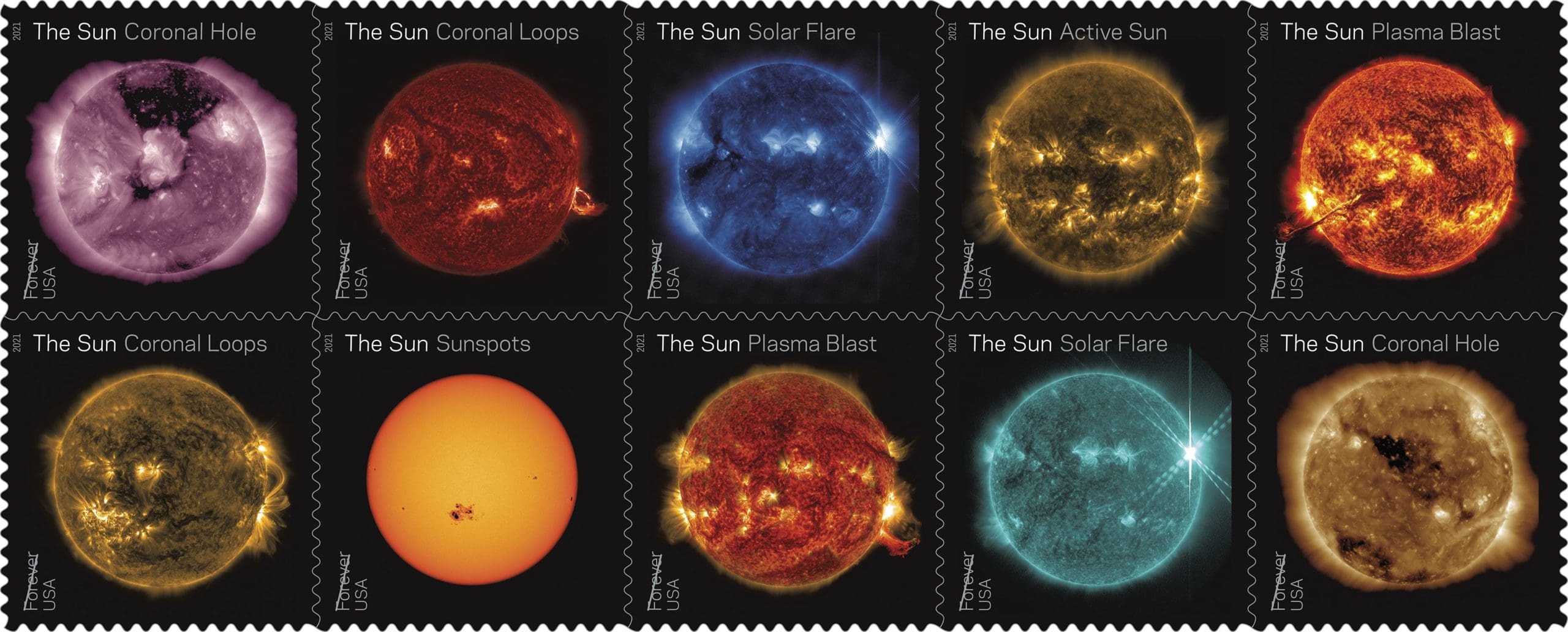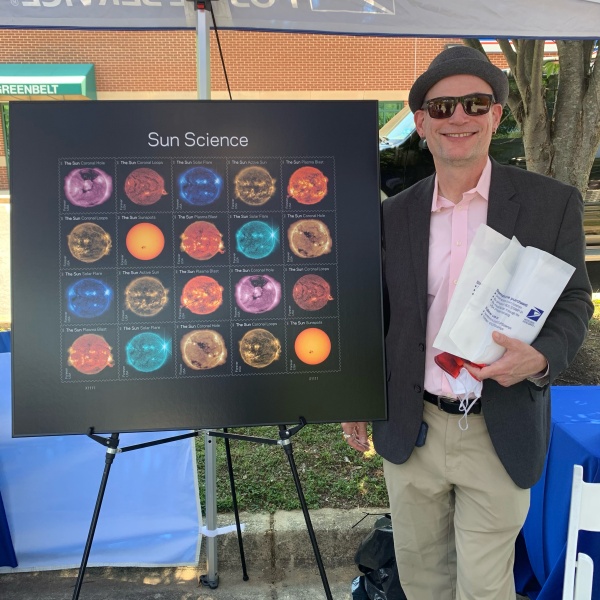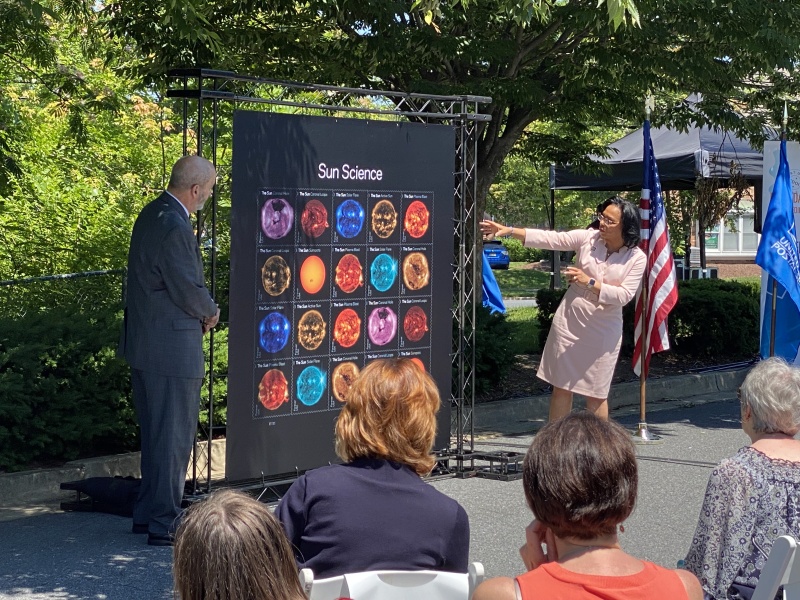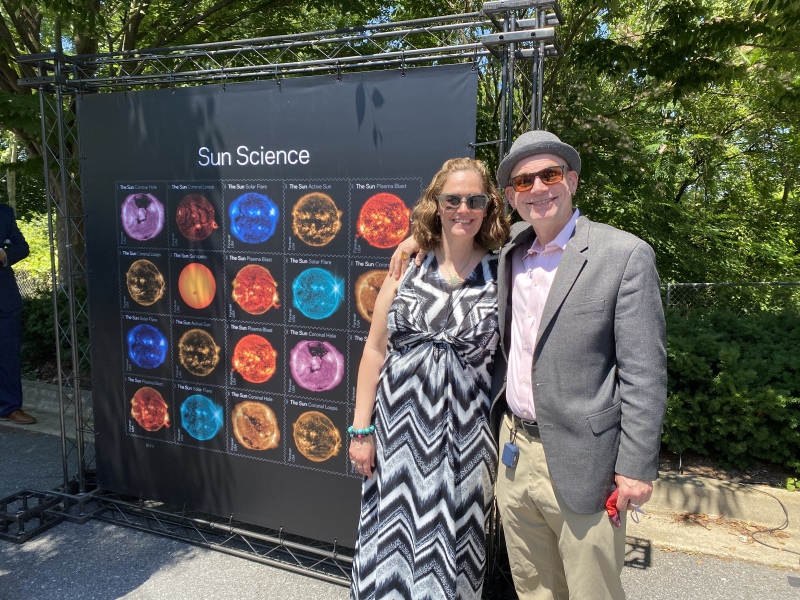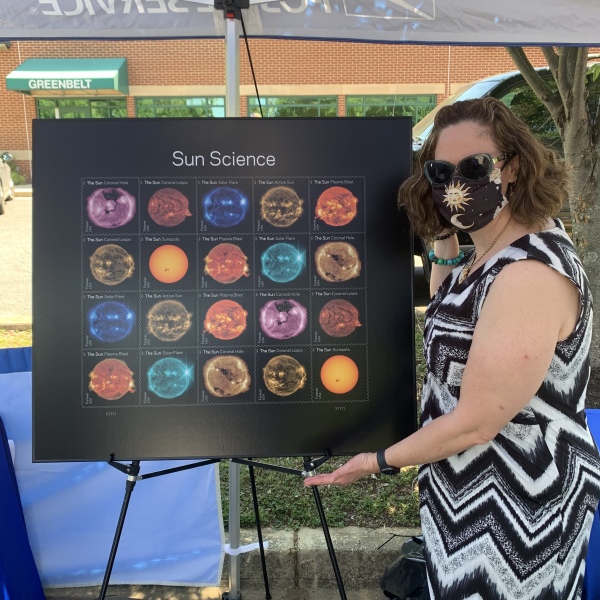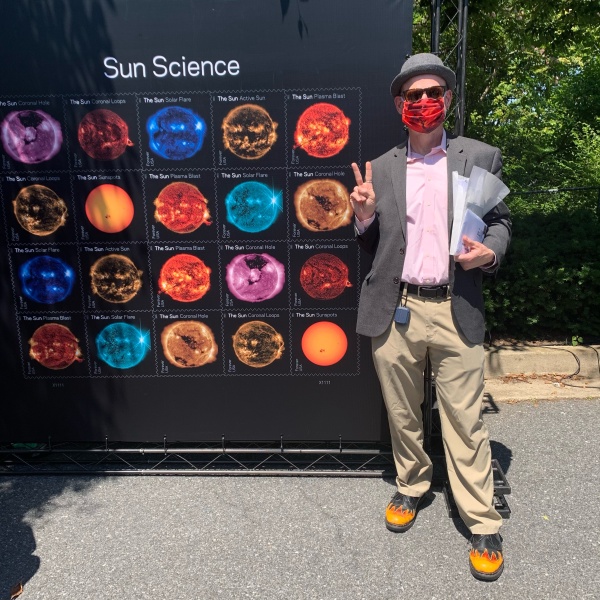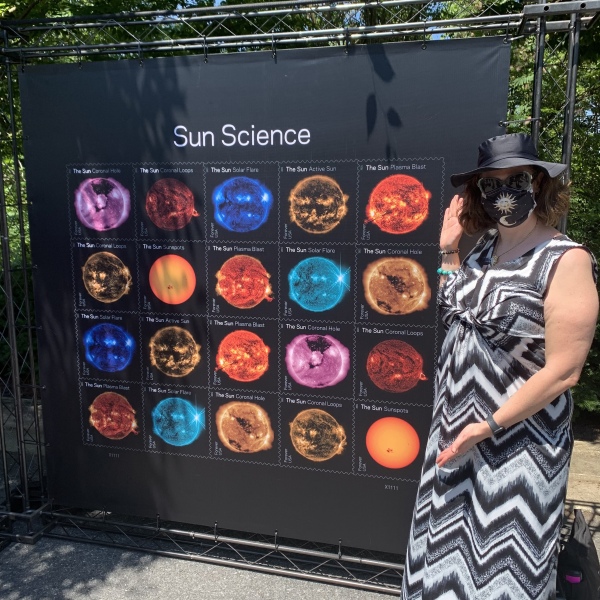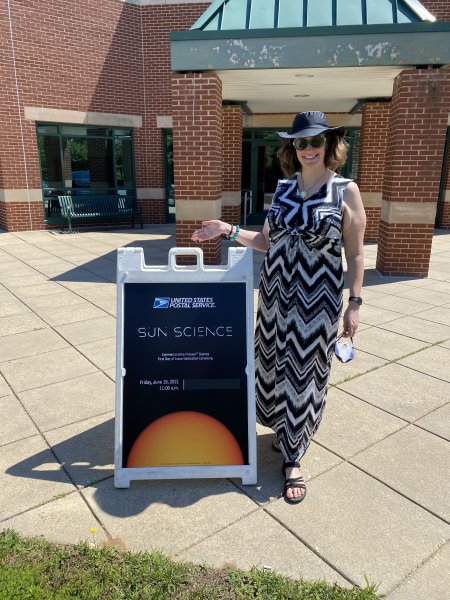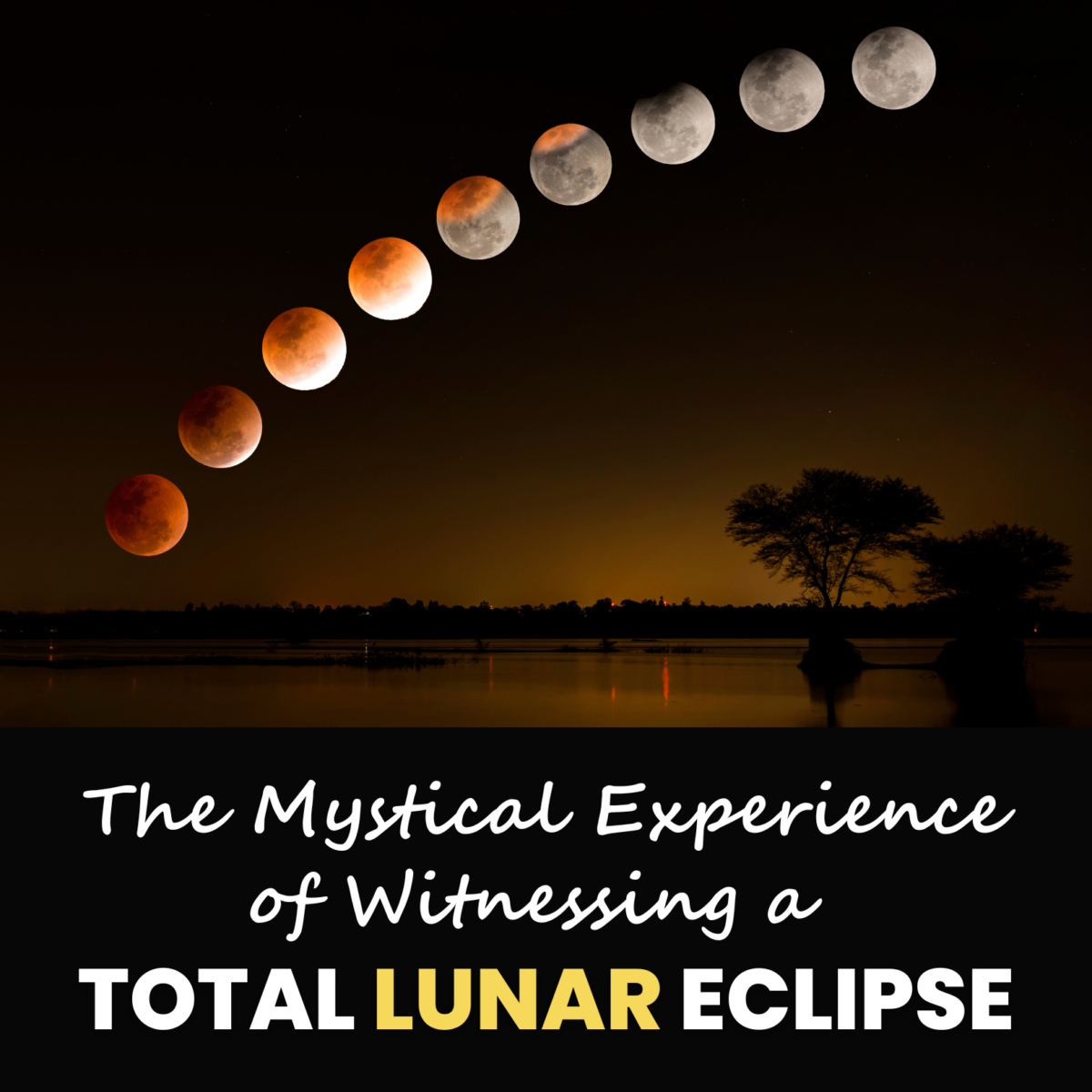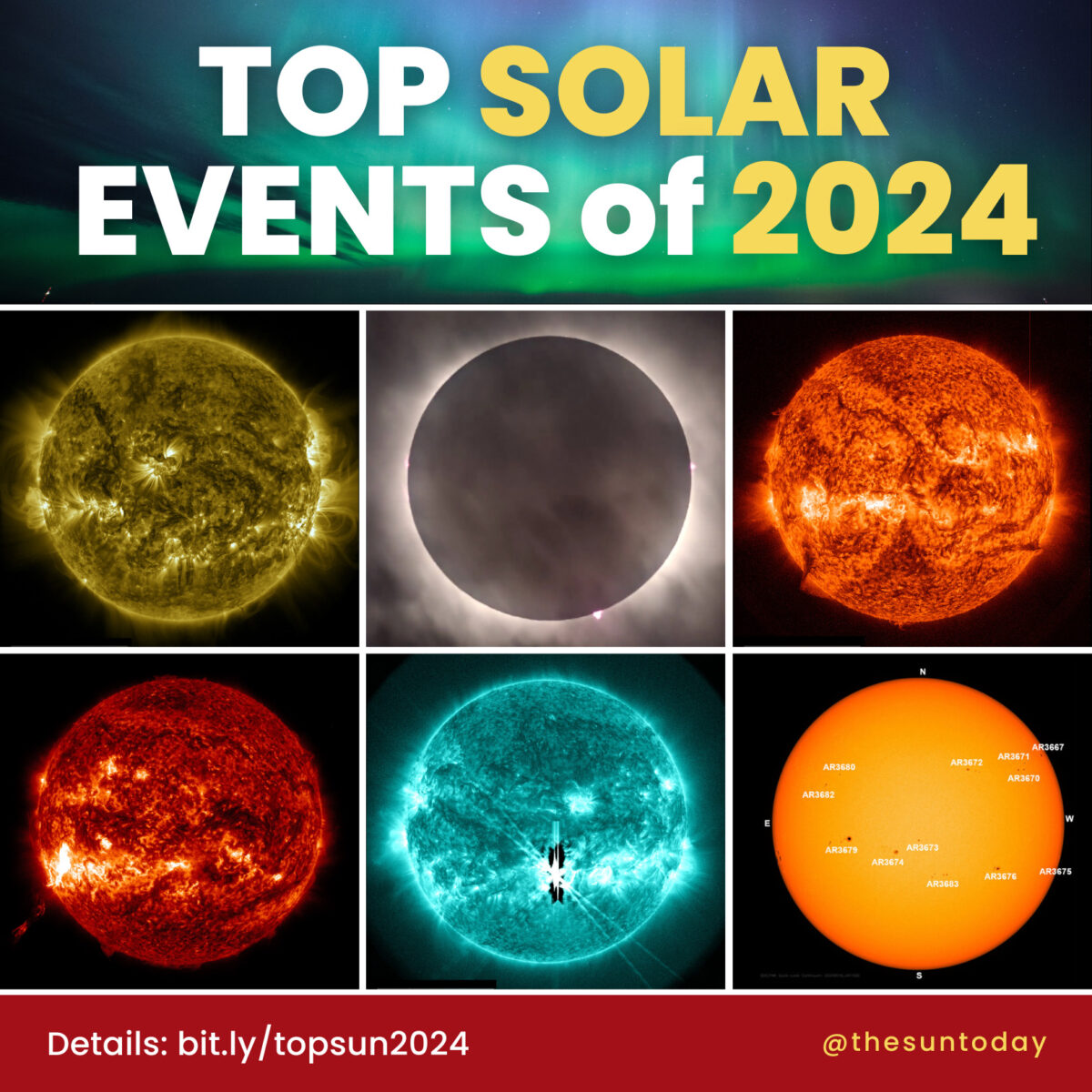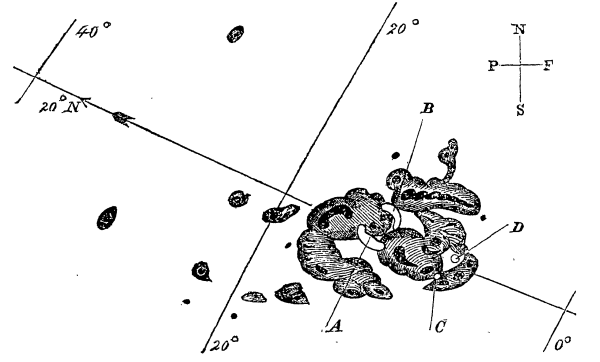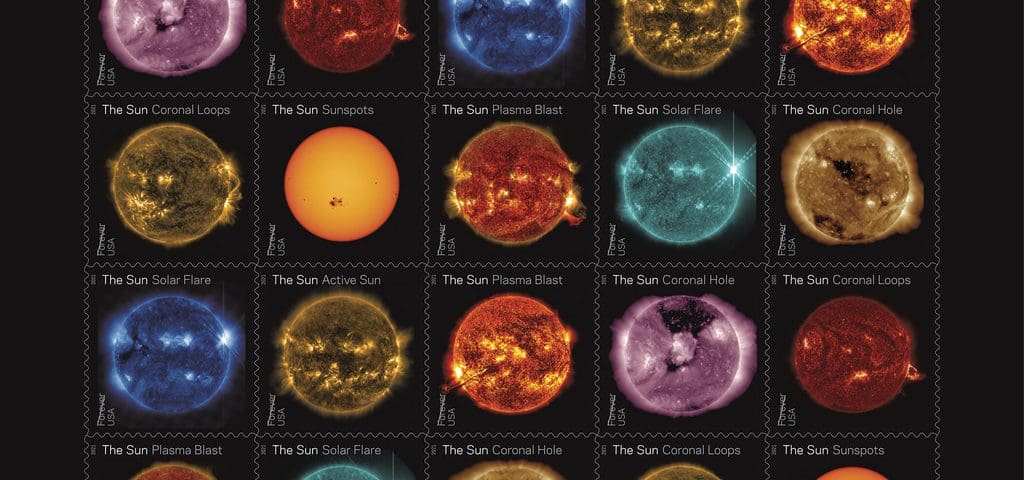
The Sun is our very own star and the heart of our solar system.
What a great way to celebrate the Sun’s importance in our lives—a stamp series from the United States Postal Service. #SunScienceStamps #NASASunScience
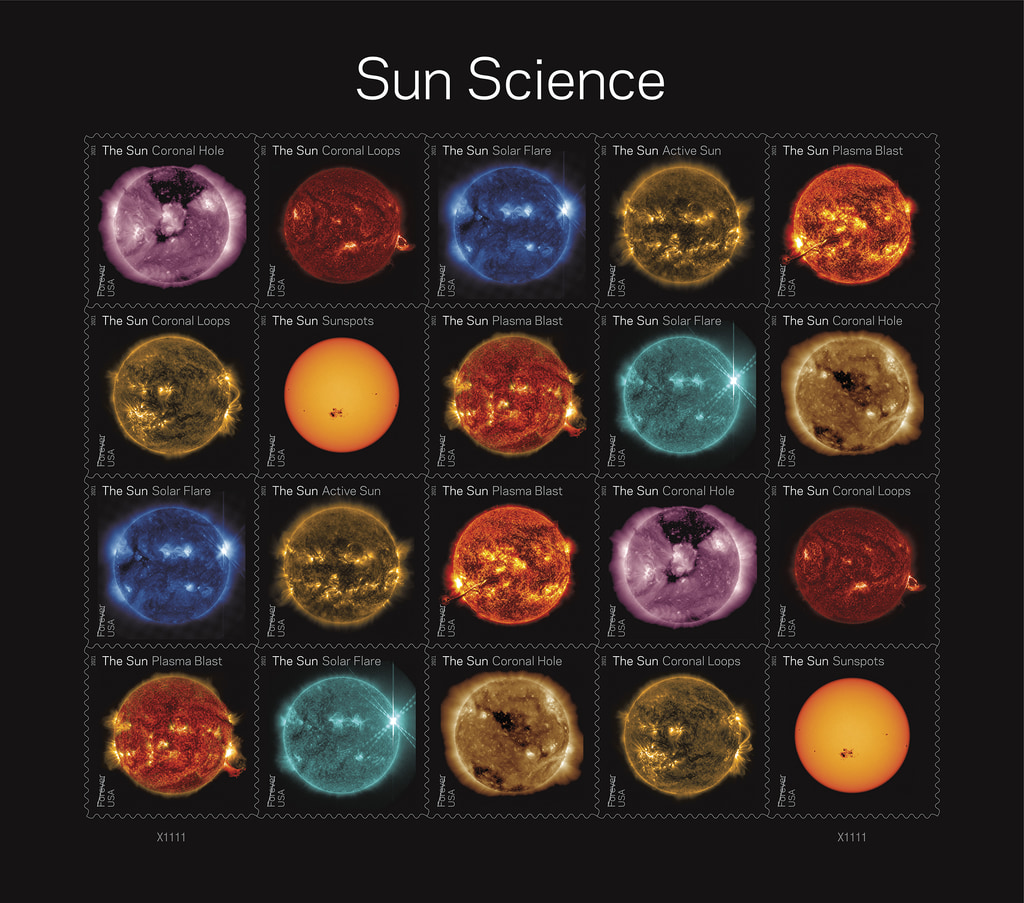
The U.S. Postal Service issued a set of stamps highlighting views of the Sun from NASA’s Solar Dynamics Observatory on June 18, 2021. CREDITS: U.S. Postal Service
On June 18, 2021, a 20-stamp set featuring 10 images from NASA’s Solar Dynamics Observatory (SDO) was released to the public.
These forever stamps highlight amazing views of the Sun from a spacecraft that has been monitoring the Sun 24-hours a day for more than a decade. SDO views the Sun in 10 different wavelengths of light covering the visible, ultraviolet, and extreme ultraviolet bands of the light spectrum.
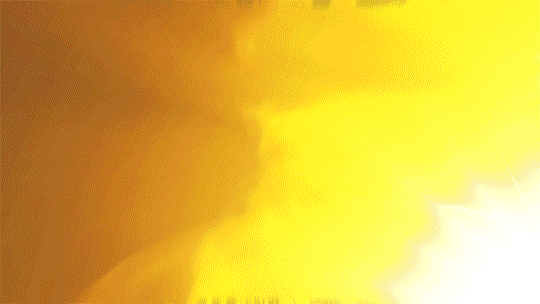
Solar Dynamics Observatory (SDO) & the Sun’s Cycle
SDO views the sun in 13 different ways, using two different onboard instruments. SDO has recorded hundreds of millions of images from the Sun, showing us different views of the visible surface all the way out to the extended part of the Sun’s atmosphere called the corona. The part of the solar atmosphere that can be seen from the ground during a total solar eclipse.
Find out more about SDO
Why is the Sun in many colors?
Taking a photo of the sun with a standard camera show a disk with no features and a yellowish color. The sun looks redder when near the horizon since the light must travel through more of Earth’s atmosphere and consequently loses blue wavelengths before getting to the camera’s lens. The sun, in fact, emits light in all colors, but since yellow is the brightest wavelength from the sun, that is the color we see with our naked eye — which the camera represents since one should never look directly at the sun. When all the visible colors are summed together, scientists call this “white light.”
SDO images the Sun in different wavelengths because they provide different information on different solar features and layers of the Sun. It is also important to observe the same event with different wavelengths in order to get a more complete picture of the physics of the event.
Find out more about the different wavelengths of light
The U.S. Postal Service issued a set of stamps highlighting views of the Sun from NASA’s Solar Dynamics Observatory on June 18, 2021. Credits: U.S. Postal Service
The stamps highlight several features of the Sun.
Coronal hole (May 2016)
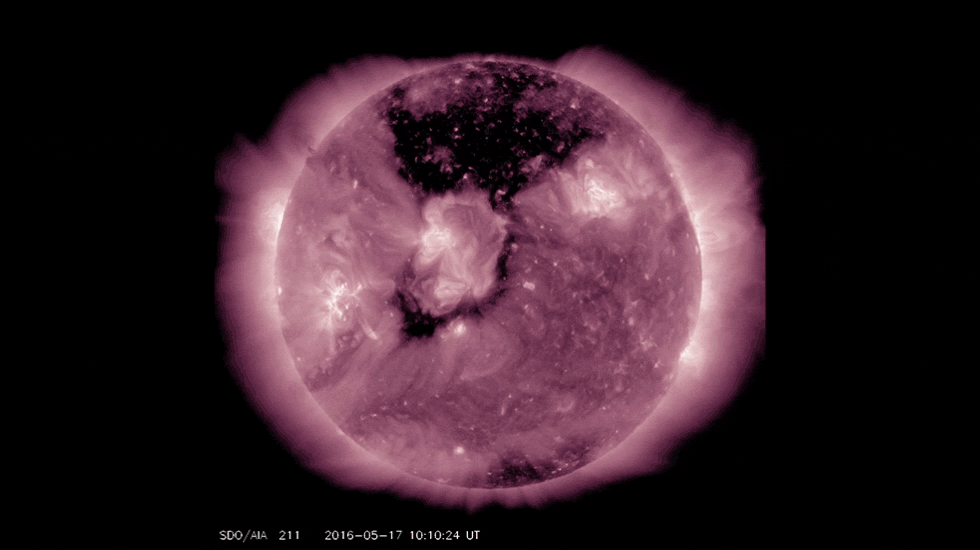
Coronal Hole – Credit: NASA/SDO
The dark area capping the northern polar region of the Sun is a coronal hole, a magnetically open area on the Sun from which high-speed solar wind escapes into space. Such high-speed solar wind streams can spark magnificent auroral displays on Earth when they collide with our planet’s magnetic field. These images were captured May 17-19, 2016, and the image on the stamp is from May 17. The images show the Sun in 211 Angstrom light, a wavelength of extreme ultraviolet light. This type of light is invisible to our eyes and is absorbed by Earth’s atmosphere, so it can only be seen by instruments in space. Credit: NASA/SDO
Coronal Loops (June 2015)
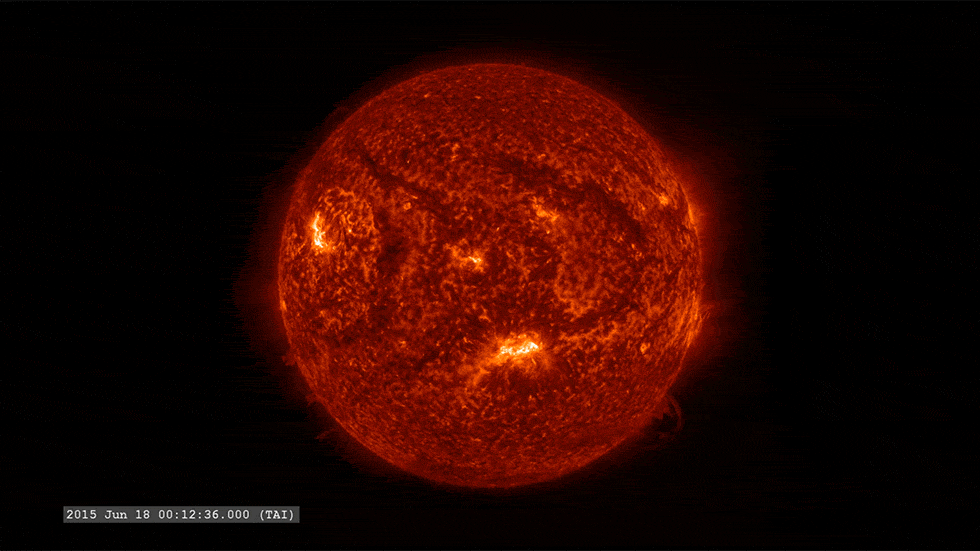
Coronal Loops – Credit: NASA/SDO
Visible on the lower right of the Sun is a prominence, with its bright arcs traced out by charged particles spiraling along the Sun’s magnetic field lines. Coronal loops are often found over sunspots and active regions, which are areas of intense and complex magnetic fields on the Sun. These images were captured on June 18, 2015, in light at 304 Angstroms, an extreme ultraviolet wavelength. Credit: NASA/SDO
Solar flare (August 2011)
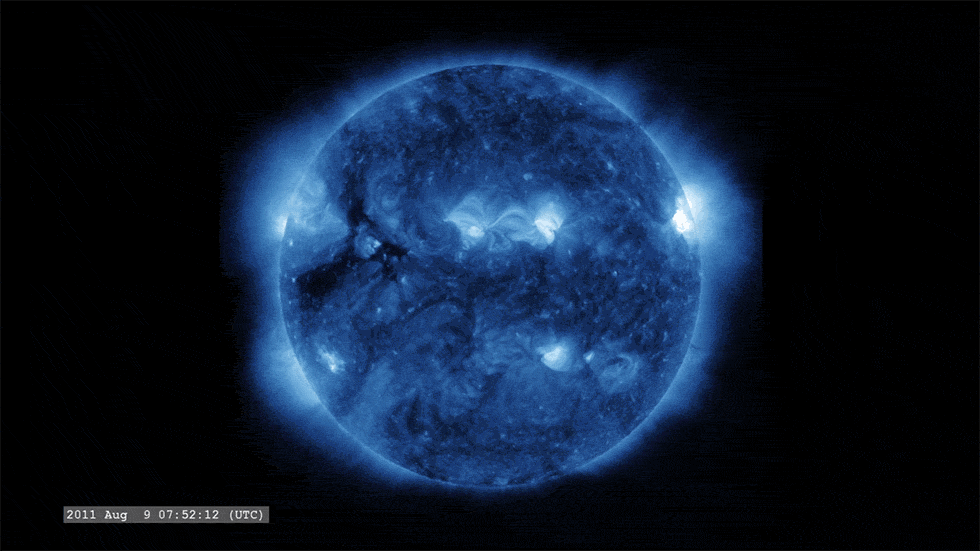
Solar flare (August 2011) – Credit: NASA/SDO
The bright flash on the Sun’s upper right is a powerful X-class solar flare. X-class flares are the most powerful type of solar flare, and these bursts of light and energy can disturb the part of Earth’s atmosphere where GPS and radio signals travel. These images were captured on Aug. 9, 2011, in extreme ultraviolet wavelength 335 Angstroms. Credit: NASA/SDO
Active Sun (October 2014)
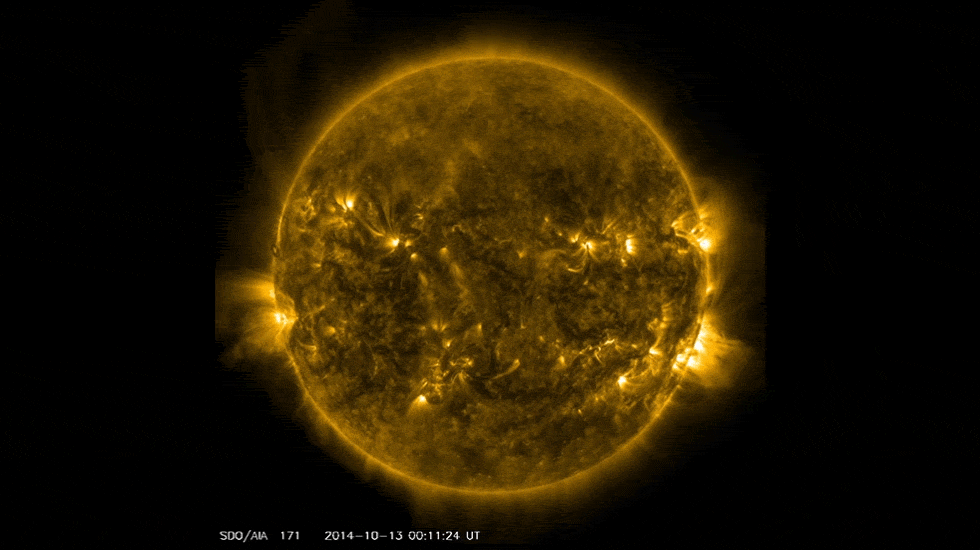
Active Sun (October 2014) – Credit: NASA/SDO
This view highlights the many active regions dotting the Sun’s surface. Active regions are areas of intense and complex magnetic fields on the Sun – linked to sunspots – that are prone to erupting with solar flares or explosions of material called coronal mass ejections. This image was captured on Oct. 8, 2014, in extreme ultraviolet wavelength 171 Angstroms. Credit: NASA/SDO
Plasma Blast (August 2012)
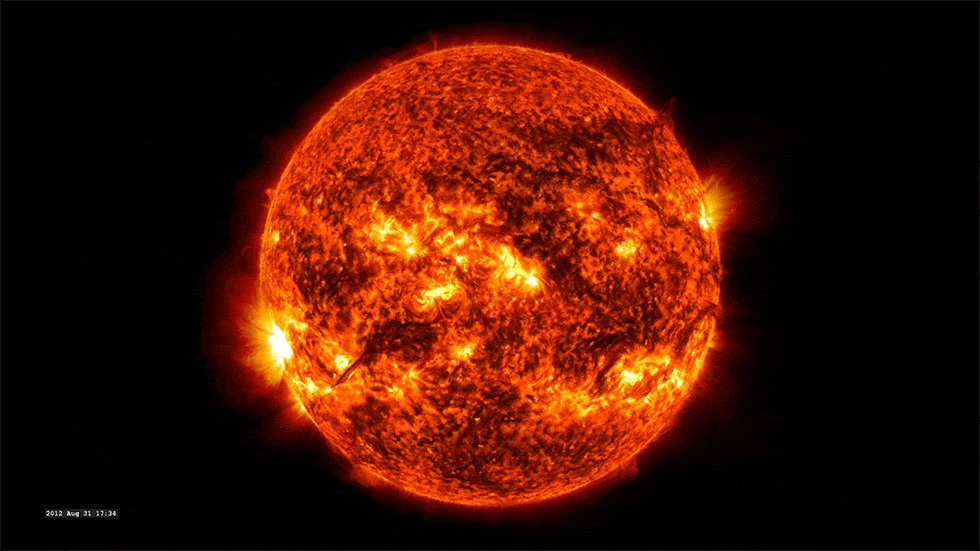
Plasma Blast – Credit: NASA/SDO
These images show a burst of material from the Sun, called a coronal mass ejection. These eruptions of magnetized solar material can create space weather effects on Earth when they collide with our planet’s magnetosphere, or magnetic environment – including aurora, satellite disruptions, and, when extreme, even power outages. These images are a blend of extreme ultraviolet wavelengths 171 and 304 Angstroms, captured on Aug. 31, 2012. Credit: NASA/SDO
Coronal Loops (August 2012)
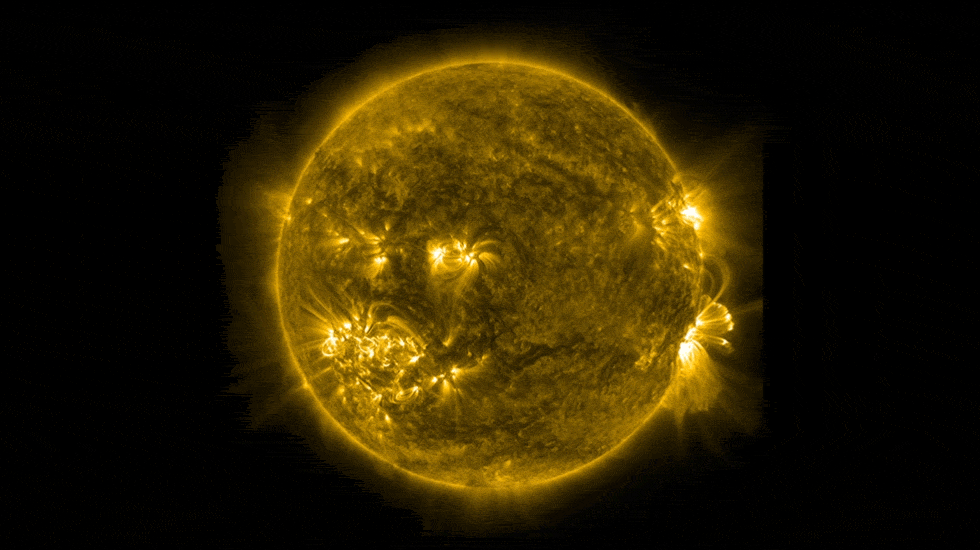
Coronal Loops – Credit: NASA/SDO
These images show evolving coronal loops across the limb and disk of the Sun. Just days after these images were taken, the Sun unleashed a powerful X-class solar flare. These images were captured in extreme ultraviolet wavelength 171 Angstroms from July 8-10, 2012, and the image on the stamp is from July 9. Credit: NASA/SDO
Sunspots (October 2014)
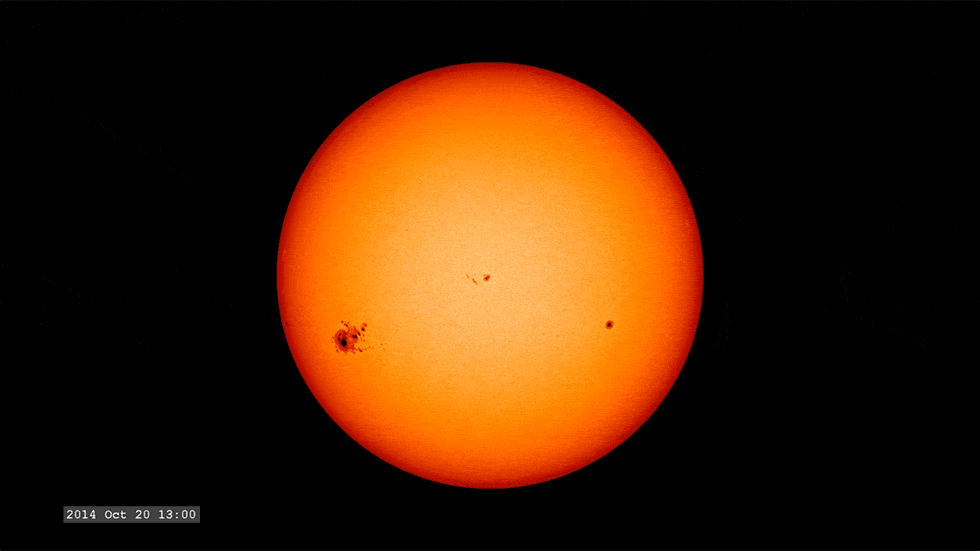
Sunspots – Credit: NASA/SDO
This view in visible light – the type of light we can see – shows a cluster of sunspots near the center of the Sun. Sunspots appear dark because they are relatively cool compared to surrounding material, a consequence of the way their extremely dense magnetic field prevents heated material from rising to the solar surface. These images were captured Oct. 20-26, 2014, and the frame on the stamp is from Oct. 23. Credit: NASA/SDO
Plasma Blast (October 2014)
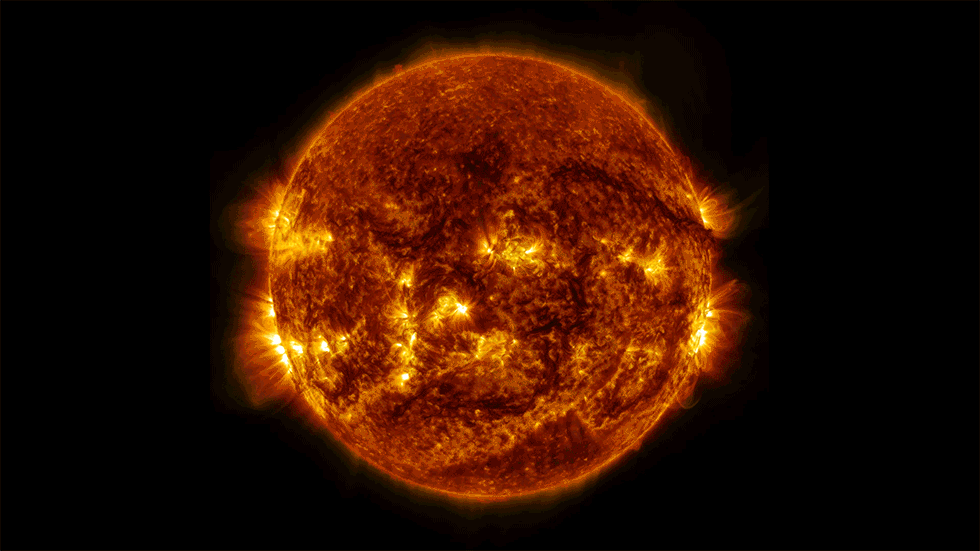
Plasma Blast – Credit: NASA/SDO
These images show a burst of plasma from the lower right of the Sun, which happened in conjunction with a mid-level solar flare. These images are a blend of extreme ultraviolet wavelengths 171 and 304 Angstroms from Oct. 2, 2014. Credit: NASA/SDO
Solar Flare (August 2011)
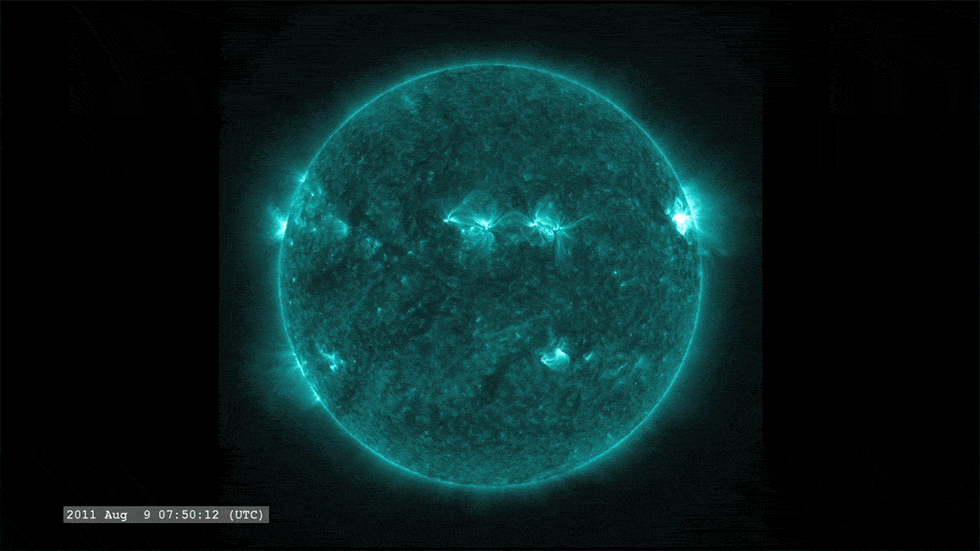
Solar Flare – Credit: NASA/SDO
These images show another view of the Aug. 9, 2011, X-class solar flare featured in the blue-toned 335 Angstrom images. These images were captured in light at 131 Angstroms, an extreme ultraviolet wavelength. Credit: NASA/SDO
Coronal Hole (January 2011)
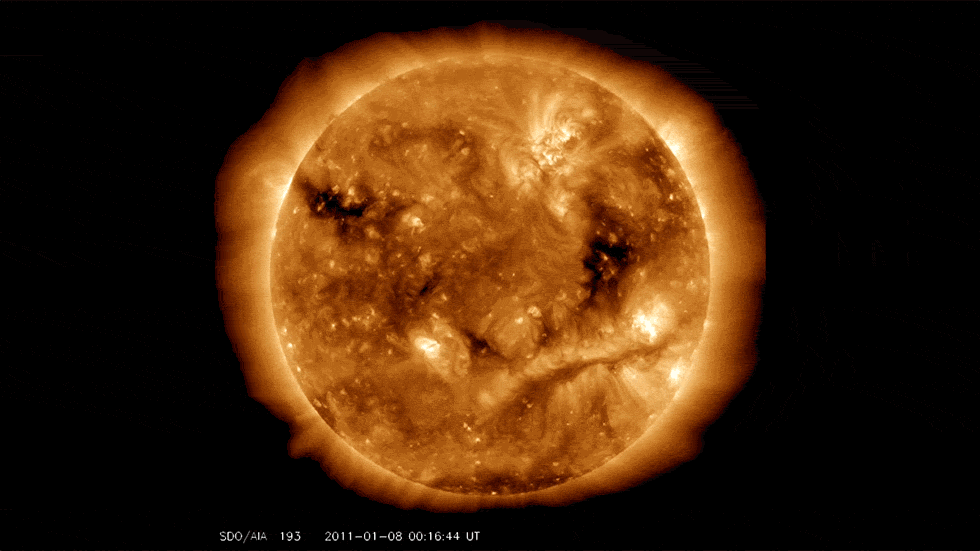
Coronal Hole – Credit: NASA/SDO
These images show a pair of coronal holes, one near the Sun’s equator and one at the Sun’s South Pole. These images were captured in extreme ultraviolet wavelength 193 Angstroms from Jan. 9-12, 2011, and the frame on the stamp is from Jan. 10. Credit: NASA/SDO
USPS Sun Science Stamp Day-of-Issue Dedication Ceremony
June 18, 2021 • Greenbelt, MD USPS Office
Click for larger images
Missions like SDO are a critical part of our monitoring system so that we can study space weather but also understand the only star in the universe we can observe in great detail.
The USPS Sun Stamps are a great way to honor the hard work of scientists and engineers around the world as well as showcase the beauty of such an important and essential part of our life, the Sun.
These stamps give us a flavor of the need to view the Sun in multiple wavelengths of light, enabling us to see different features and phenomena from multiple perspectives. This is helping scientists to unravel the mysteries of the Sun and giving us a powerful glimpse into the workings of the universe.
We hope these stamps can also provide the public with an opportunity to see the many faces of the Sun and its powerful beauty.
CREDITS: NASA Goddard and USPS


